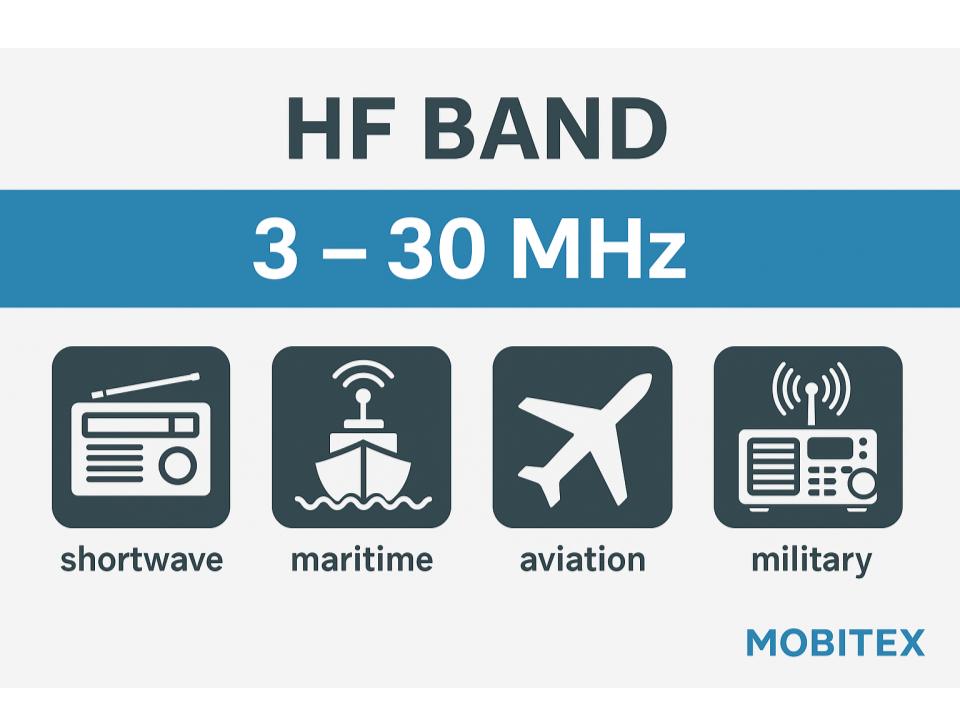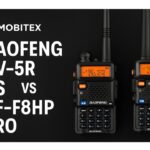📡 The HF band, or High Frequency band, is one of the most fascinating and historically significant portions of the radio spectrum. Stretching from 3 MHz to 30 MHz, it plays a crucial role in long-distance communication, broadcasting, maritime and aviation communication, and amateur radio operations.
🌍 HF Band Frequency Range
HF (High Frequency): 3 MHz – 30 MHz
This range sits between:
- MF (Medium Frequency) – below 3 MHz
- VHF (Very High Frequency) – above 30 MHz
Because of its ability to bounce signals off the ionosphere, the HF band enables global communication, even with relatively low power transmitters.
⚙️ Key Uses of the HF Band
📻 Shortwave Broadcasting
The HF band is home to shortwave radio – international broadcasting that can reach listeners thousands of kilometers away.
- Popular with travelers, sailors, and remote listeners
- Offers global news, cultural programming, and emergency broadcasts
- Frequencies typically used: 5 MHz – 26 MHz
🚢 Maritime & Aviation Communication
HF is essential for long-range communication over oceans and remote regions where satellites or VHF signals aren’t available.
- Ships use HF for weather updates, distress calls, and coordination
- Aircraft use it for oceanic control when flying outside radar and VHF coverage
- Typical frequencies: 2.8 MHz – 22 MHz
🌎 Amateur (Ham) Radio
Amateur radio operators love the HF band because it supports worldwide communication using modest equipment.
- Common bands include 3.5 MHz (80 m), 7 MHz (40 m), 14 MHz (20 m), and 21 MHz (15 m)
- Modes: SSB, CW (Morse code), digital (FT8, PSK31, etc.)
- Ideal for DXing — contacting distant stations across continents
🛠️ Military, Emergency & Diplomatic Communications
HF remains a backup and secure method for military and government communication when satellite networks are unavailable or compromised.
- Used for encrypted voice and digital traffic
- HF networks provide redundancy for disaster response and coordination
🌐 How HF Propagation Works
The magic of HF lies in ionospheric reflection — signals bounce between the Earth and the ionosphere layers (mainly the F-layer), allowing them to travel far beyond the horizon.
- Daytime propagation: Higher frequencies (15–30 MHz)
- Nighttime propagation: Lower frequencies (3–10 MHz)
- Affected by solar activity, season, and time of day
This natural propagation makes HF ideal for global coverage without satellites — a vital tool for communication resilience.
🔋 Characteristics of the HF Band
| Property | Description |
|---|---|
| Frequency Range | 3 MHz – 30 MHz |
| Wavelength | 100 m – 10 m |
| Propagation | Ionospheric (skywave) and groundwave |
| Coverage | Local to worldwide |
| Modulation Types | AM, SSB, CW, Digital (FT8, RTTY, etc.) |
📡 Summary
The HF band continues to be one of the most versatile and resilient parts of the radio spectrum. Despite the rise of satellites and the internet, it remains indispensable for:
- Long-distance emergency links
- Shortwave broadcasting
- Amateur radio
- Maritime and aeronautical safety
In a world of digital networks, HF stands as a timeless reminder of how nature itself – through the ionosphere – connects people across the globe.




